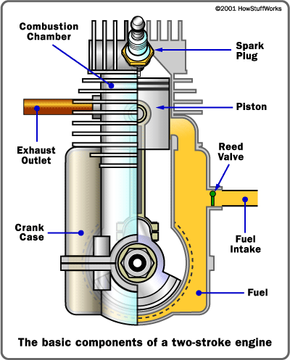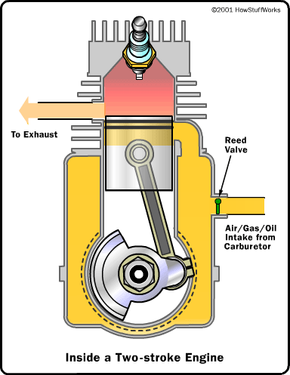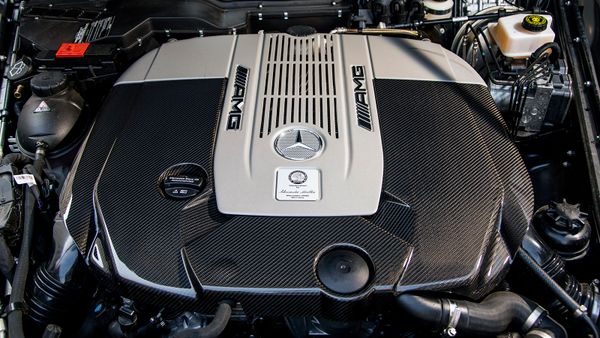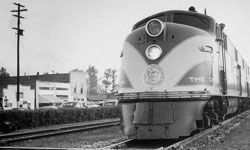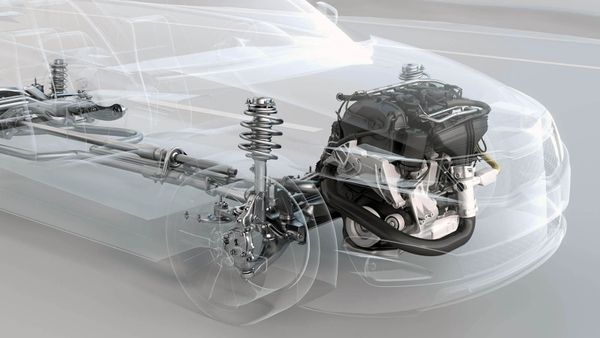Now the momentum in the crankshaft starts driving the piston back toward the spark plug for the compression stroke. As the air/fuel mixture in the piston is compressed, a vacuum is created in the crankcase. This vacuum opens the reed valve and sucks air/fuel/oil in from the carburetor.
Once the piston makes it to the end of the compression stroke, the spark plug fires again to repeat the cycle. It's called a two-stoke engine because there is a compression stroke and then a combustion stroke. In a four-stroke engine, there are separate intake, compression, combustion and exhaust strokes.
You can see that the piston is really doing three different things in a two-stroke engine:
- On one side of the piston is the combustion chamber, where the piston is compressing the air/fuel mixture and capturing the energy released by the ignition of the fuel.
- On the other side of the piston is the crankcase, where the piston is creating a vacuum to suck in air/fuel from the carburetor through the reed valve and then pressurizing the crankcase so that air/fuel is forced into the combustion chamber.
- Meanwhile, the sides of the piston are acting like valves, covering and uncovering the intake and exhaust ports drilled into the side of the cylinder wall.
It's really pretty neat to see the piston doing so many different things! That's what makes two-stroke engines so simple and lightweight.
If you have ever used a two-stroke engine, you know that you have to mix special two-stroke oil in with the gasoline. Now that you understand the two-stroke cycle you can see why. In a four-stroke engine, the crankcase is completely separate from the combustion chamber, so you can fill the crankcase with heavy oil to lubricate the crankshaft bearings, the bearings on either end of the piston's connecting rod and the cylinder wall. In a two-stroke engine, on the other hand, the crankcase is serving as a pressurization chamber to force air/fuel into the cylinder, so it can't hold a thick oil. Instead, you mix oil in with the gas to lubricate the crankshaft, connecting rod and cylinder walls. If you forget to mix in the oil, the engine isn't going to last very long!

